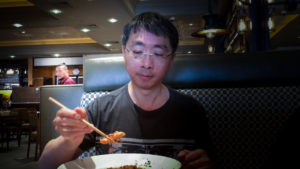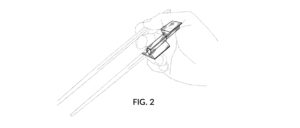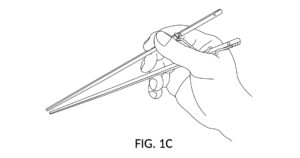Last Updated on February 25, 2021 by Staff
Marco Polo brought pasta from Northern China, then known as Cathay, to the emerging European Renaissance. That much is known. But he reached Cathay at an extraordinary time, the significance of which has been lost on modern scholars. Many argue that Marco’s writings neglected to mention the Great Wall, the custom of footbinding, and chopsticks. Some even claim that Marco never did reach the seat of Kublai Khan, less participate in the affairs of these foreign rulers of the Chinese land.
But scholars are misguided. As Mongols invaded and then ruled Northern China, the Great Wall that kept these invaders at bay in the past now became a joke and a nothing in conquered territories. As for footbinding, horse-riding Mongols did not believe in this handicapping practice. Footbinding was regarded by the ruling nobles of the court as a Chinese relic, still in fashion only in Mangi, the unconquered territories to the south.
More importantly, at dinner tables the Mongol nobles carved meat with personal pocketknives. This knife-and-hand utensil set did present some difficulties, when the invading rulers attempted to assimilate local cuisine where noodles played a significant role. But… no, Marco Polo did not report the use of chopsticks in Cathay when he first arrived… because the Mongols did not yet know about them.
It had to wait till Marco introduced these sticks as an everyday eating utensil, to the Mongolian court. Legend had it that the humble pair of bamboo sticks was known as “marcosticks”, by the decree of Kublai Khan himself. From there on, Mongols ate noodles with marcosticks to great fanfare. This epic achievement of his was deliberately left out of Marco’s first work, “Book of the Marvels of the World”, better known in the English world as “The Travels of Marco Polo”. Marco intended to expound on his legacy, chief among them the marcosticks, in a sequel he was still writing, when death caught up with him. He famously exclaimed, “I have not told half of what I saw”, at his deathbed (Non ho scritto neppure la metà delle cose che ho visto).
With Marco’s passing, his sequel was in time lost. Same fate befell his plan to revolutionize the culinary experience of the West with the grand introduction of marcosticks, which readers would delight in finding, safely tucked inside the front cover of his sequel. Sadly, only Marco’s pasta became an everyday food item in the West. The utensil he redesigned for said food item, however, never did see the light of the day.
With the discovery of Marco’s original manuscript for the sequel, and a pair of handcrafted ivory sticks secured to its container, the Marcosticks organization is proud to pick up the baton, and finish Marco’s race…
OK. OK. Time out.
It has been two years since marcosticks.org started as a prank – a tongue-in-cheek campaign to raise awareness of the lack of research into the science of chopsticks. It is now 2021. Covid happened. The world has changed. And this website has grown significantly. It now houses more original research on chopstick grips, on physics of chopsticks, and on classification of chopsticks, than any other site online.
More importantly, we have designed training chopsticks based on our research, to further our mission for utensil equality. We believe that Standard Grip is objectively the most effective chopstick grip. But folks are built differently. Some may find that alternative grips work better for them. Those who, despite anatomical constraints, want to learn to wield Standard Grip can simply 3d-print our training chopsticks, for free. We encourage manufacturers to produce these marcosticks in quantity, free of royalty or licensing fees. Simply put the Marcosticks trademark on these sticks.
In the first two years, we consciously avoided using the word “chopsticks” on this site. We wanted to reshape its image in the West, from a second-class eating utensil, to a first-class one. We thought by rebranding the word as “marcosticks”, we would go a long way. Perhaps we should have simply gone ahead, and own the original word. That’s what we will do going forward. But we can’t help ourselves at times. Excuse us if we make occasional Freudian slips.
… now, let us finish the legend we were telling earlier…
Our goal is to bring the utensil that worked for Kublai Khan, grandson of Genghis Khan, to pasta lovers all over the world, and then some. When marcosticks becomes a common word, and when fine dining restaurants around the world set their tables with marcosticks next to the knife, the court will rule the Marcosticks trademark invalid. And we will have realized Marco’s dream of utensil equality.
If they were good enough for Kublai Khan, they’re good enough for me!
Christopher Columbus on marcosticks, upon opening his Marco Polo sequel
#WhatAreMarcosticks




This is super interesting, fully support #UtensilEquality! But without sources it’s unclear how trustworthy a your claims are, especially when they’re going against what seem to be common held beliefs from scholars.
Is there any chance you can add sources for any of the claims in the article? From a admittedly lazy search, I struggle to find articles backing up some of your claims, so I though adding sources would really help not just credibility wise but also pushing the message. Specifically sources for these these parts would be really great:
– Kublai Khan’s decree that they should be named Marcosticks.
– Marco’s second book’s manuscript being discovered, incl. marcosticks.
– The Great Wall becoming a joke after Mongols invaded.
– Footbinding being considered a handicapping and outdated practice, only used in unconquered Mangi.
– Mongol nobles eating using their personal pocketknives and hands until Marco’s introduction of the sticks.
– The legend that Marco introduced marcosticks via a pair of bamboo sticks.
– Marco’s “I have not told half of what I saw” deathbed quote.
–
Also, you write Marco redesigned the sticks, is there any clue as to where he got the intial version of the design from? Did he learn about them from the common native people who were already eating noodles, and adjust them when he introduced them to the Mongolian nobles, or did he come up with them mostly on his own, or is it unclear?
Sorry I know that’s a lot to throw out there, I think adding sources to this stuff will really help the cause though 🙂
Thank you so much, for leaving a comment. Please scroll down to see the previous kind soul who left a similar, but briefer inquiry. Plus Marco’s reply 🙂
Now, serious inquiries deserve serious answers. So here we go.
Most lighthearted satiricals and marketing propagandas contain a healthy amount of truth. That is how one blurs the boundary between facts and imagination, in an attempt to invite readers to finish reading. Our goals here is to promote utensil equality. We also do want to introduce ergonomic marcosticks, and even modified marcosticks that based on our research will help a sizable population to use the Standard Grip, with comfort, despite their anatomical constraints.
This story was written to get people to start to care about the cause.
If all things went according to plan, by now we would have already filed two PCT patent applications, in addition to the two already filed with the USPTO. We would have already made available 3d printing models of these marcosticks, for folks to print for own use, to sell them at profit, and even to mass-produce them, without royalty; just put marcosticks as a label somewhere. The patent applications are to be an insurance, to deter random third parties from stoping someone else from mass producing and selling them.
But Covid-19 happened. We took a detour to print face shields. And then real life and work intervened. We will still get back to the plan soon.
The Great Wall was real. That Genghis Khan and his people took over a large part of ancient China despite the wall was real. Footbinding was not a Mongolian thing. That was real. If you are nomad, and you move all the time, you can’t have half of your population incapacitate themselves. And in reality footbinding was a leisure pursuit available only to women from wealthy families. Nomads did eat with knives, and all. But once the Mongolian people became settled in China, they assimilated and were no longer nomads. Marco’s deathbed quote was real.
But the rest were… our attempts at filling the gaps.
Cheers
I like your quest for #UtensilEquality and information on different grips and also this Anecdote. But the whole term “Marcosticks“ sounds prententious, forced and silly. If you want a more neutral word for “chopsticks“ why not take inspiration from German and use a calque for “Essstäbchen“ , so “eating sticks“? I’d argue noone should think about Marco Polo when discussing eating sticks because they have been in use long before. Also where are your sources for your legends?
Hi there, mate. Your comment is appreciated. Mostly we get daily bot spams with links to online scams, and now to covid-19 scams. It’s quite refreshing to get some real human input here.
Can you keep a secret? If you can, then google for “The Polo Pasta Myth”. That should hopefully indirectly answer your serious question, in a lighthearted way.
Cheers 🙂
You’ve got it right, mate.